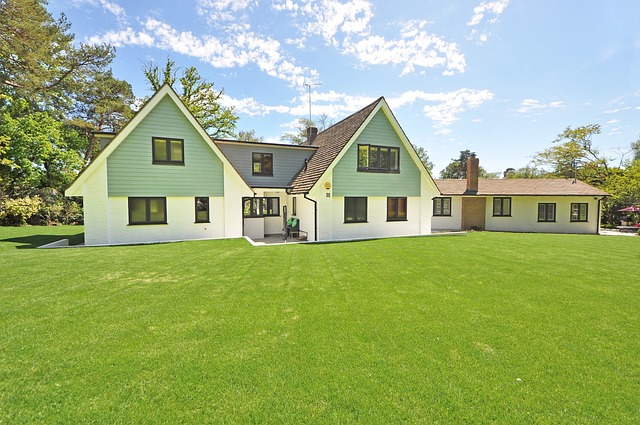Adopting energy-efficient practices, particularly with modern HVAC systems, is crucial for both comfortable living and environmental sustainability. Smart thermostats, variable-speed compressors, and enhanced insulation optimize temperature control and reduce energy consumption. Heat pumps offer versatile heating/cooling solutions, decreasing reliance on fossil fuels. Implementing these innovative HVAC solutions results in significant utility bill savings, improved indoor air quality, and a reduced carbon footprint, aligning with global efforts for an energy-efficient home. A holistic approach including proper insulation, gap sealing, programmable thermostats, natural ventilation, and renewable energy sources like solar panels is key to achieving substantial savings and minimizing environmental impact.
In today’s quest for sustainable living, energy-efficient homes are gaining prominence. Among the key components is a sophisticated HVAC (Heating, Ventilation, and Air Conditioning) system that not only regulates indoor comfort but also significantly reduces energy consumption. This article explores the transformative power of innovative HVAC systems in achieving an eco-friendly home. We delve into cutting-edge technologies, highlight benefits for homeowners, and offer practical tips for designing a space that marries efficiency with comfort.
Understanding the Importance of Energy-Efficient HVAC Systems
In today’s world, where environmental concerns are at the forefront, adopting energy-efficient practices in our homes has become more crucial than ever. Among various systems that contribute to an energy-efficient home, HVAC (Heating, Ventilation, and Air Conditioning) stands out as a game changer. With innovative technology, these systems offer a sustainable solution for comfortable living.
Energy-efficient HVAC systems play a pivotal role in reducing carbon footprints while keeping homes cozy during all seasons. Traditional HVAC setups can be significant energy consumers, but modern innovations have transformed this sector. Advanced features like smart thermostats, variable-speed compressors, and enhanced insulation work together to optimize temperature control, resulting in substantial energy savings. By integrating these systems into our living spaces, we not only create comfortable environments but also contribute to a greener planet.
Advanced Technologies Shaping the Future of Heating and Cooling
The future of heating and cooling is here, with advanced technologies revolutionizing how we maintain comfortable living spaces. Smart thermostats, for instance, learn individual preferences and optimize temperature settings, reducing energy consumption significantly. These devices can adjust settings remotely via smartphones, allowing residents to save on bills and contribute to a more sustainable energy-efficient home.
Furthermore, advancements in heat pump technology offer efficient heating and cooling solutions. Heat pumps transfer heat from one location to another, providing both heating during colder months and cooling when temperatures rise. This versatile approach not only reduces reliance on fossil fuels but also contributes to a greener, more eco-friendly energy-efficient home.
Benefits of Implementing Innovative HVAC Solutions in Your Home
Implementing innovative HVAC solutions offers a multitude of benefits for homeowners seeking an energy-efficient home. These advanced systems are designed to optimize temperature control while minimizing energy consumption, leading to significant cost savings on utility bills. By leveraging smart technology and efficient components, modern HVAC systems can adapt to occupancy patterns, automatically adjusting settings to maintain comfort levels without unnecessary energy waste.
Moreover, innovative HVAC solutions contribute to a more sustainable living environment. High-efficiency filters and improved air circulation enhance indoor air quality, promoting healthier breathing for residents. With their reduced carbon footprint, these systems play a vital role in minimizing the environmental impact of heating, ventilation, and air conditioning, aligning with global efforts to achieve energy-efficient homes.
Designing an Energy-Efficient Living Space: Tips for Homeowners
Designing an energy-efficient living space starts with a holistic approach. Homeowners can significantly reduce their carbon footprint and utility bills by incorporating smart HVAC systems into their homes. This includes investing in high-efficiency air conditioners, heat pumps, or furnaces that carry Energy Star ratings. Ensuring proper insulation, sealing gaps around windows and doors, and using programmable thermostats to control heating and cooling are also essential tips for an energy-efficient home.
Additionally, homeowners can enhance efficiency by opting for zone control systems, which allow for precise temperature regulation in different areas of the house. Using natural ventilation during milder weather conditions and incorporating renewable energy sources like solar panels can further contribute to a more sustainable living environment. Remember, every small step towards making your home energy-efficient adds up to a bigger impact on both your wallet and the planet.
Innovative HVAC systems are not just a luxury; they’re a necessity for achieving an energy-efficient home. By embracing advanced technologies, homeowners can enjoy comfortable living spaces while significantly reducing their carbon footprint and utility bills. The benefits are clear: improved comfort, increased property value, and a more sustainable future. Implementing these solutions is easier than ever, and with thoughtful design choices, anyone can create an eco-friendly and efficient living environment.
